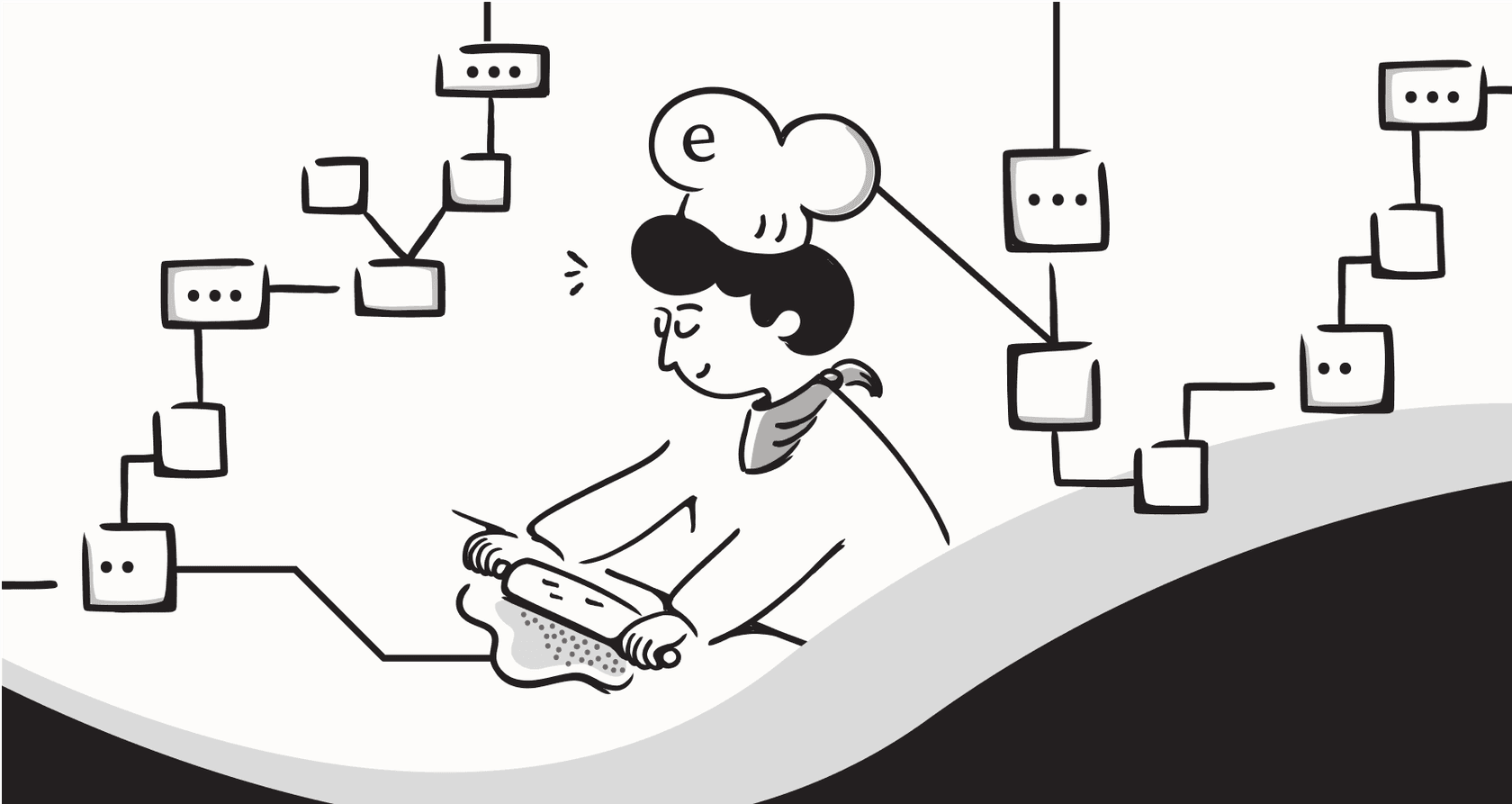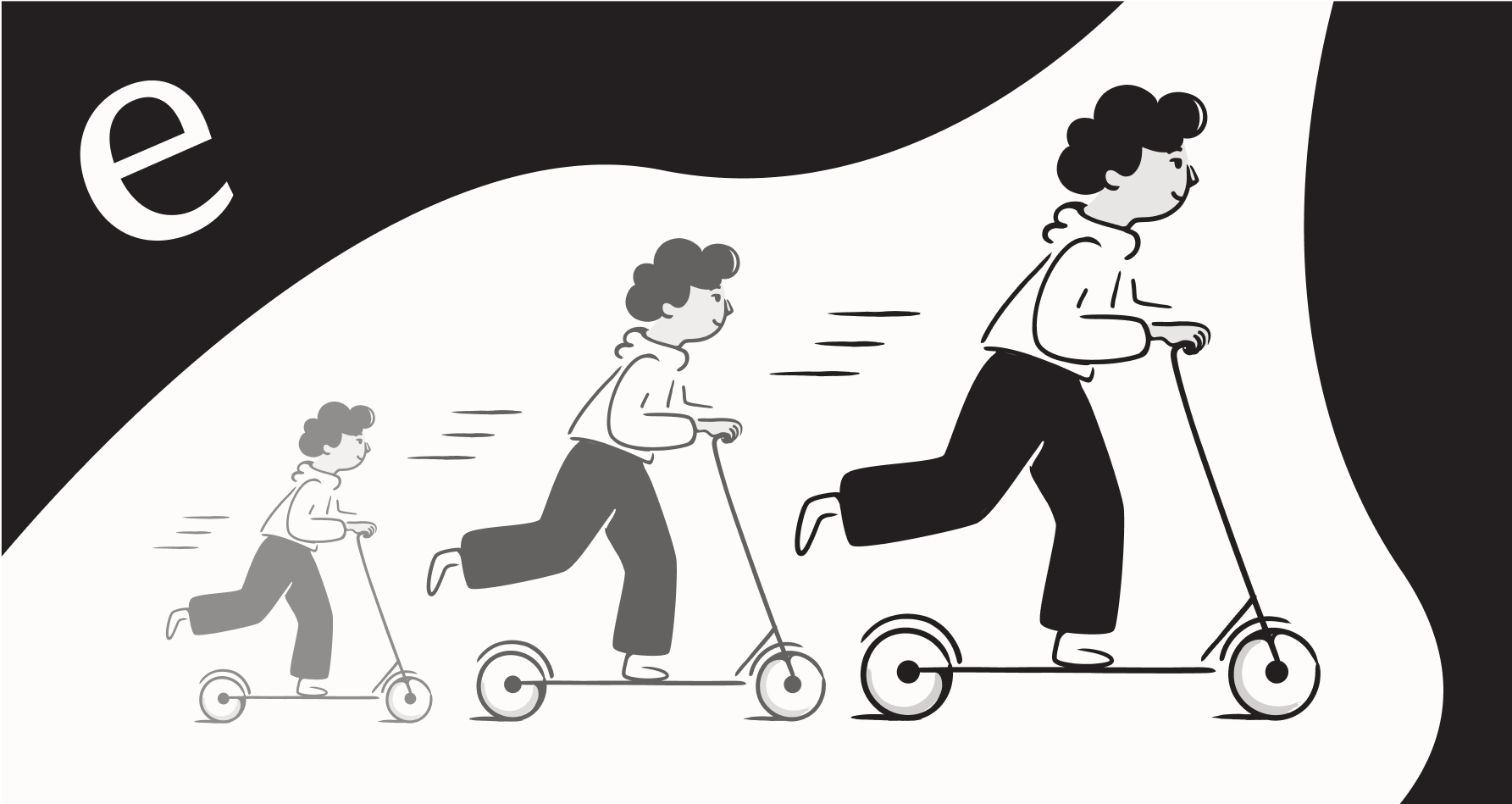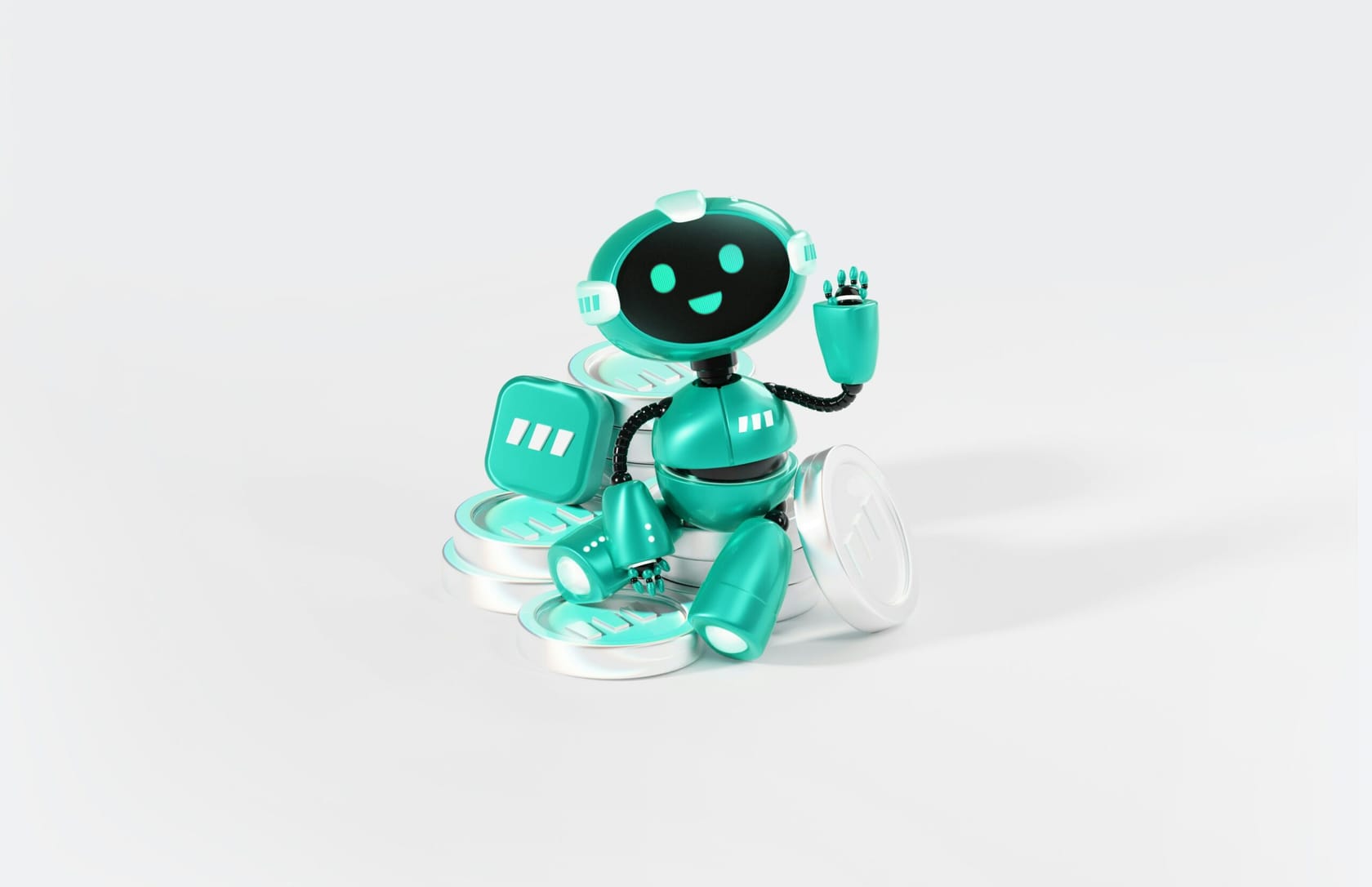
Zendesk is a widely used customer support platform for good reason. It works (sometimes). Through the use of internal bots and AI, they’ve made their platform better, but it still has its limitations.
So what would make Zendesk a more complete platform for efficient customer support?
Integrating eesel AI, namely the AI agents and ease of customization that comes with it. All of which help achieve the goal of improved customer satisfaction. Your customers will get instant, accurate, and human-like answers to FAQs and common queries, while your life agents get to focus on more complex or pressing matters.
Difference between chatbots and AI agents
Without overcomplicating things, chatbots come in two main types but we’ll focus on the more common rule-based chatbots that use a flowchart style method to answer basic queries.
AI agents would be the next evolutionary step of an AI chatbot, think virtual assistant for your customers. Like the bots, it learns from a knowledge base, but it has a huge advantage. They’re to the point where they automate processes for you, even able to take actions based on customer input.
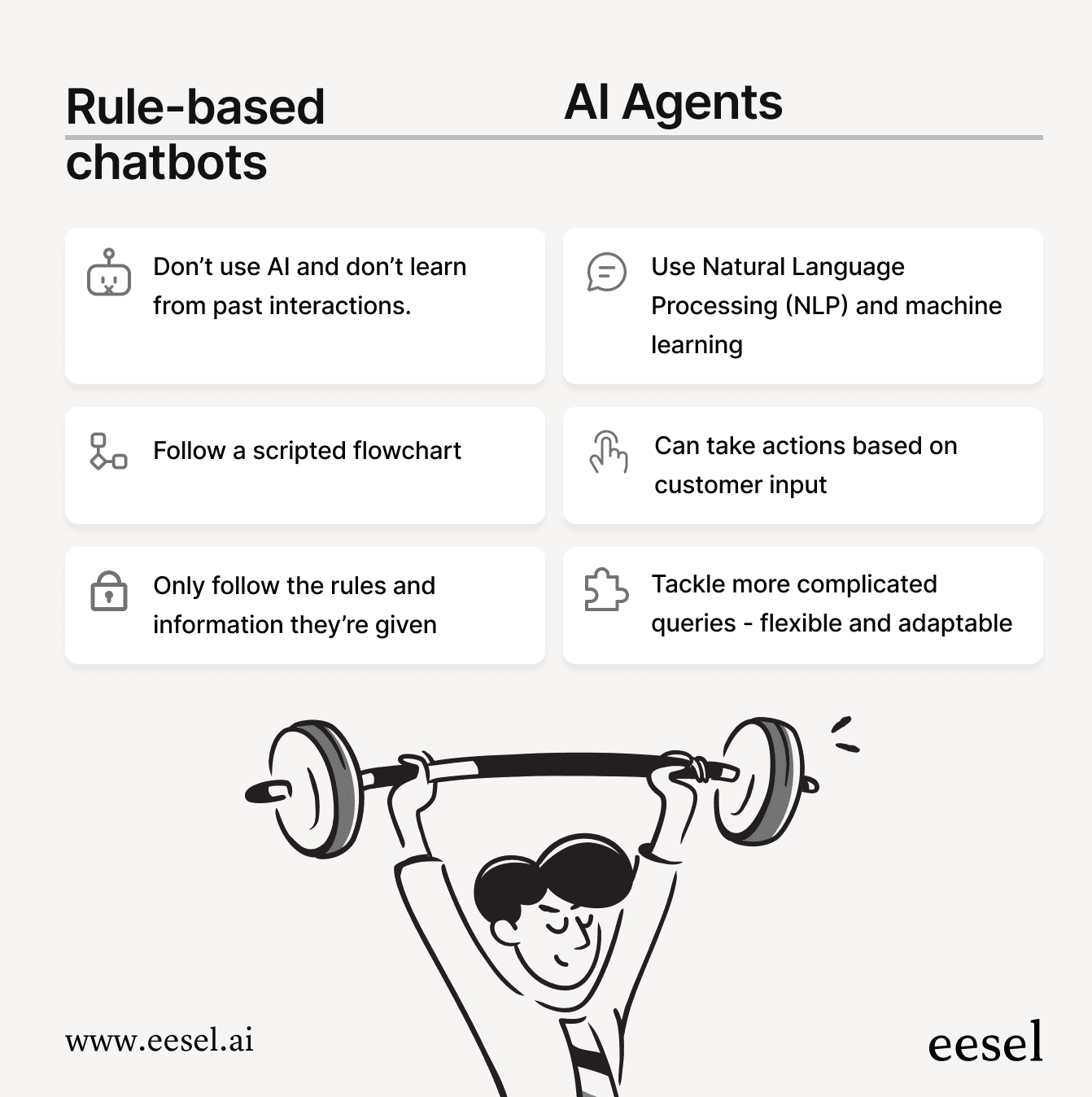
Chatbots can help support teams by answering all commonly asked questions and other repetitive tasks, leaving more time for your team to handle more complex matters that require a human touch. AI agents on the other hand can tier one queries, as they can “think”, action, and when necessary escalate a ticket to a live agent in order to keep things moving more efficiently.
Zendesk’s native AI
So what makes Zendesk’s AI so special in the first place?
- Intelligent Triage: The keystone of Zendesk’s Advanced AI offering, automatically sorts incoming tickets based on intent, the language the query is in, and the sentiment.
- Quick Answers: Essentially a copilot built into the Zendesk workspace. Helps live agents answer queries faster as AI can quickly search its knowledge base for an answer to tickets.
- Generative answers: Uses generative AI to help agents better phrase answers in a faster and more efficient manner.
While there are other features, these stand out as some of the biggest draws. On the flipside of this, all of these features are part of Zendesk’s Advance AI add-on pack, meaning it costs more. The cost is probably the biggest drawback to Zendesk’s AI. The best features are locked behind a paywall to an already (arguably) expensive AI tool, at least for what you’re getting. Check out our pricing guide for Zendesk to learn more.
Introducing eesel AI’s AI agents
(trumpet sounds)
At first glance eesel AI appears to look like a suite of tools that Zendesk already has. All of that changes in practice. Without getting into the nitty-gritty of the technical side of things, eesel AI is easy to set up without much help (there are some integrations that require you to contact us). Like the set up, customization within the dashboard is straightforward and takes little time to learn and do. You’ll see in a minute.
The pricing is probably what you’re the most curious about. Unlike other AI options, eesel AI has more affordable options for what you get. Aside from the set plans, you have the option to get a custom plan that works better for your business, meaning you can pay-per-interaction. From startups to larger enterprises, you’ll be able to create something that works for your unique situation.
Oh not to mention, no hidden fees. Ever. That means no random ballooning of prices at the end of each month. You’ll know what you’re going to pay before you’re billed.
What makes eesel AI a contender for your support?
- Adaptable: Can use a wide variety of integrations with ease, meaning multiple platforms can have access to otherwise inaccessible apps.
- Ease of use: You can integrate a majority of apps yourself with a couple of clicks, some may require contacting support as they’d have to go under the hood to make changes. Customizing the AI to your brand voice is also easy and can be done in a couple of steps.
- Time saving abilities: Drastically cut down on wasted time, have chatbots answer FAQs and other easy to answer common items, AI chatbots intercept more complex issues and can either resolve and action them without human interaction or kick it up to human support when needed.
Step by step guide: Creating an eesel AI agent in Zendesk
It’s important that you know our terminology, particularly: sources and destinations.
Destinations are where your eesel AI will chat with users – like your web page or Teams.
Sources are something you will use to train eesel AI on, like Google Docs, your help center, or past Zendesk tickets.
How to set up your eesel AI agent for Zendesk
Here’s a couple of simple steps to get your eesel AI agent working in Zendesk:
- Sign up or log into your account and head to the dashboard.
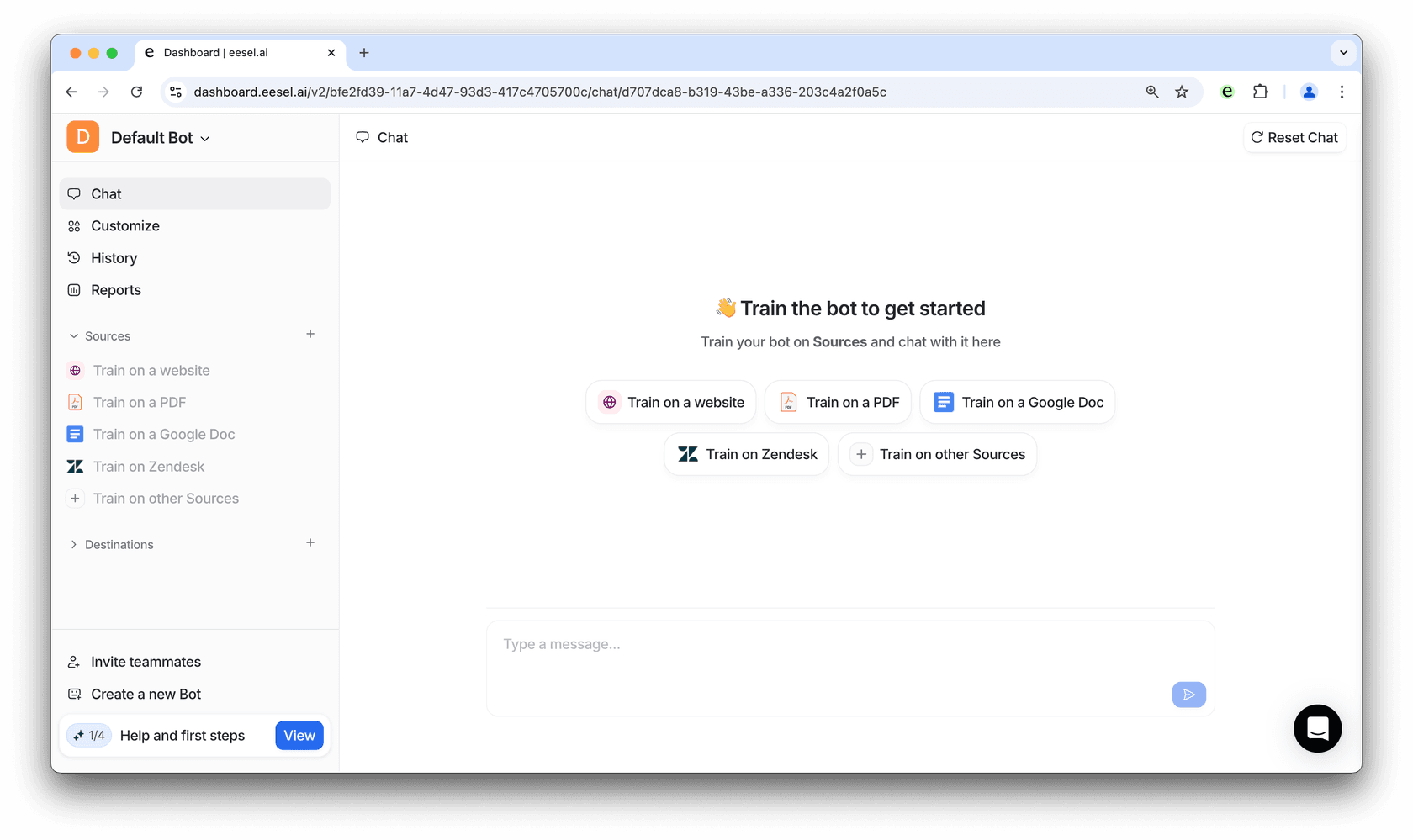
2. At the top left select the bot you’d like to use as your AI agent.
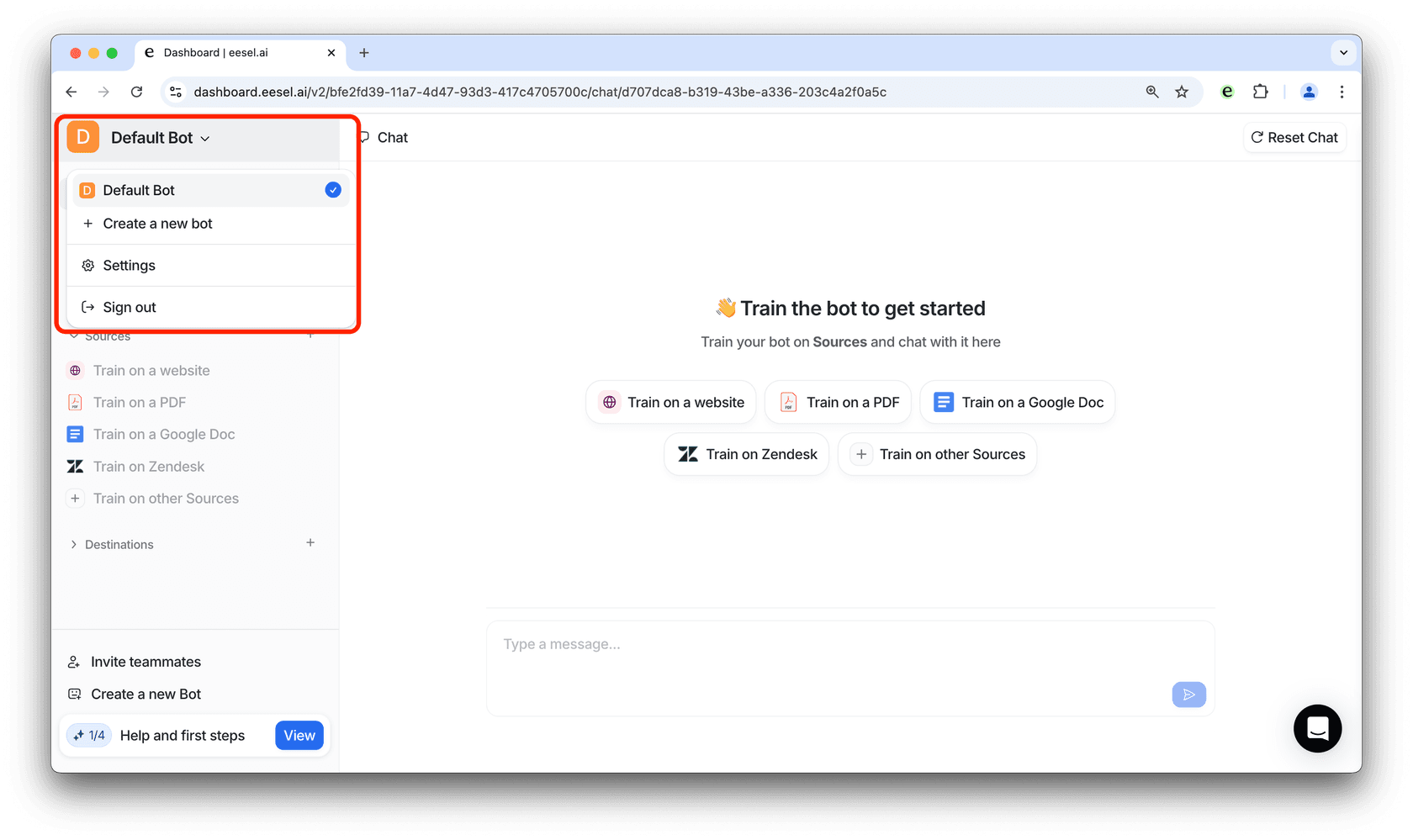
3. Click on the “+” icon next to “Sources” and add all relevant sources.
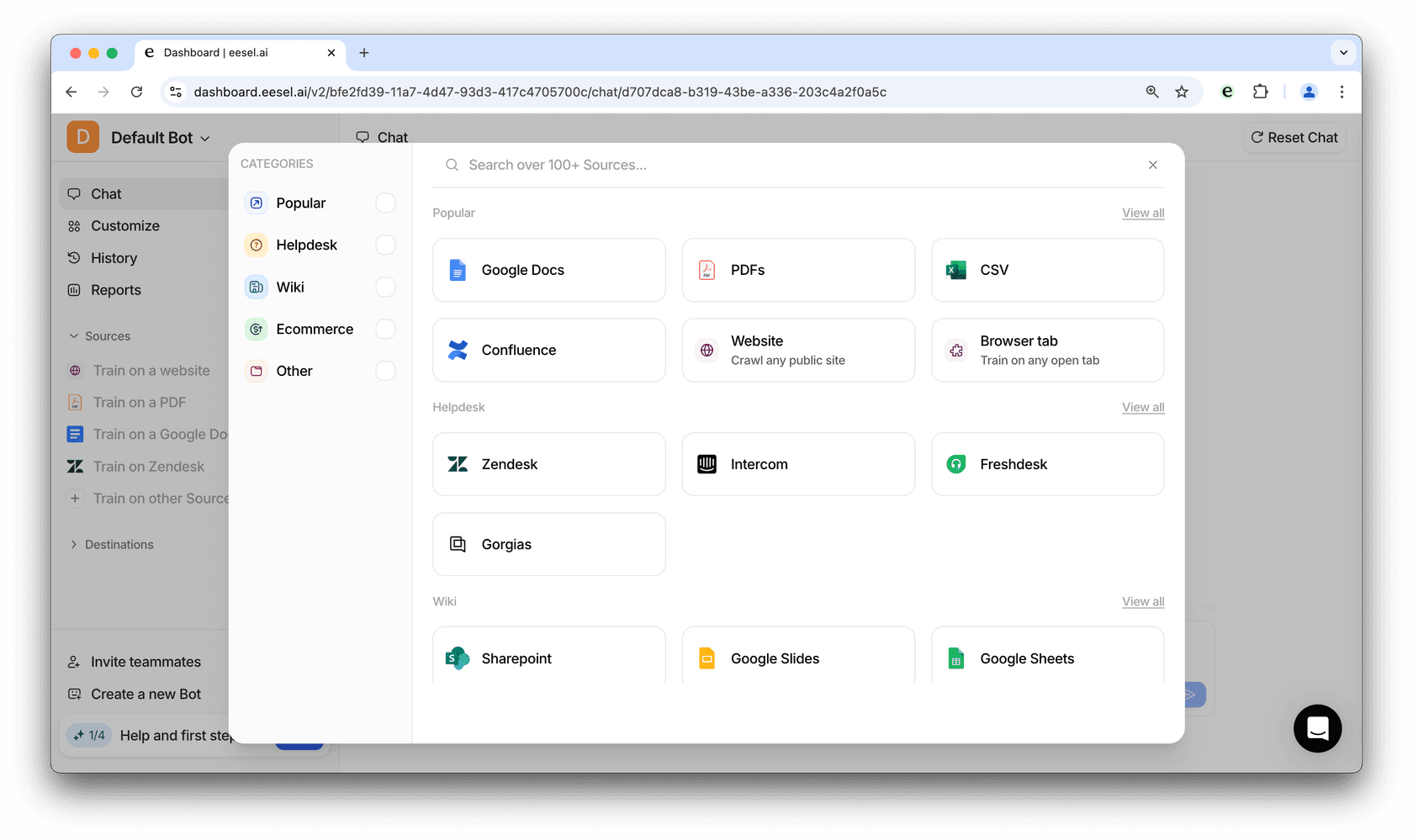
4. Back at the dashboard, click on the “+” icon next to “Destinations” and select Zendesk. From here you’re going to want to click on the “AI Agent” tab, and enter your Zendesk subdomain.
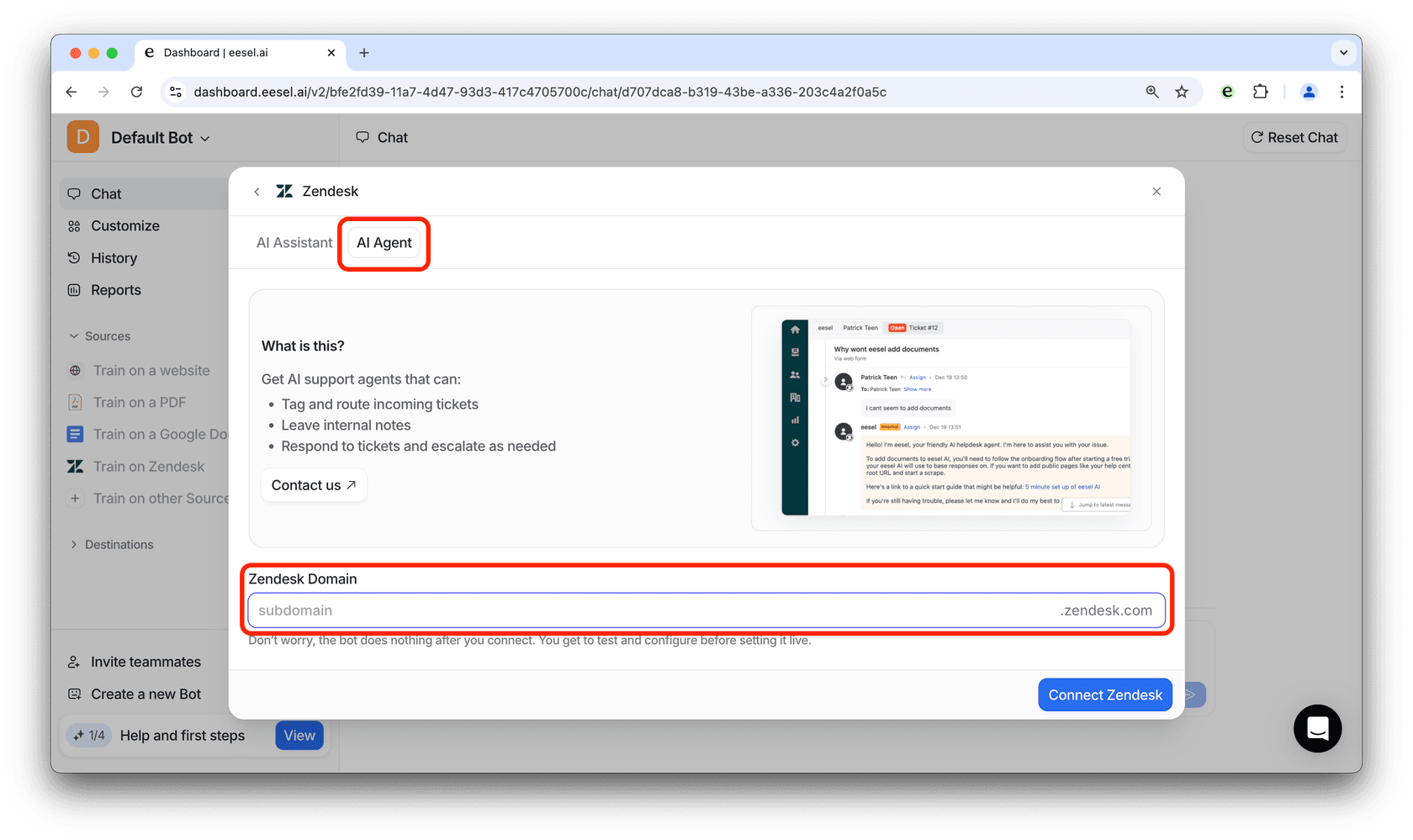
Streamline your customer service with eesel AI’s agents today!
Zendesk’s AI offerings do bring the benefits of automation and faster, more accurate replies to your customers, they do so at a cost. eesel AI remedies this by offering a feature rich alternative at a much more affordable (and transparent) price point.
Improve your customer service process by using eesel AI agents, get a 7 day free trial here, or reach out to us at hi@eesel.app to ask more questions!
Share this post

Article by
Diane de la Cruz
Diane Cecilia de la Cruz is an email copywriter with 15 years of content experience, writing clear, research-driven sequences that turn leadership coaches’ subscribers into high-ticket clients.

